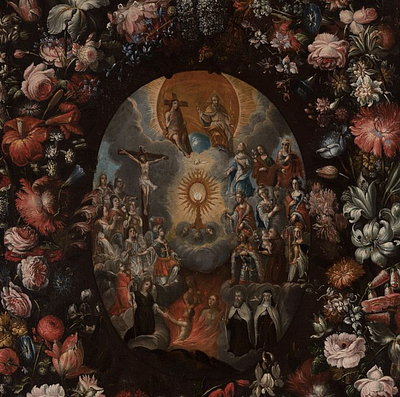LOUIS DE CAULLERY (Caullery, circa 1580- Antwerp, 1621). "Reception before the church". Flemish school, XVII century. Oil on canvas. Re-drawn.
Lot 138
About Seller
Setdart Auction House
Carrer Aragó 346
Barcelona
Spain
Setdart Subastas was born in 2004 and is currently the first online art auction in Spain with solidity, prestige and reliability guaranteed by our more than 60,000 users. Setdart has a young, dynamic and enterprising team ready to successfully manage the purchase and sale of art works through custom...Read more
Estimate:
EUR€10,000 - EUR€12,000
$10,752.69 - $12,903.23
Absentee vs Live bid
Two ways to bid:
- Leave a max absentee bid and the platform will bid on your behalf up to your maximum bid during the live auction.
- Bid live during the auction and your bids will be submitted real-time to the auctioneer.
Bid Increments
| Price | Bid Increment |
|---|---|
| EUR€0 | EUR€10 |
| EUR€200 | EUR€25 |
| EUR€500 | EUR€50 |
| EUR€1,000 | EUR€100 |
| EUR€3,000 | EUR€200 |
| EUR€5,000 | EUR€500 |
| EUR€10,000 | EUR€1,000 |
| EUR€20,000 | EUR€2,000 |
| EUR€50,000 | EUR€5,000 |
About Auction
By Setdart Auction House
Jul 14, 2021
Set Reminder
2021-07-14 06:30:00
2021-07-14 06:30:00
America/New_York
Bidsquare
Bidsquare : OLD MASTERS
https://www.bidsquare.com/auctions/setdart-auction-house/old-masters-7202
Setdart Auction House sofia@setdart.com
Setdart Auction House sofia@setdart.com
- Lot Description
LOUIS DE CAULLERY (Caullery, circa 1580- Antwerp, 1621). "Reception before the church". Flemish school, XVII century. Oil on canvas. Re-drawn. Size: 45 x 61.5 cm; 56 x 73 cm (frame). Louis de Caullery was a painter with special mastery for the representation of crowds gathered at official events, congregations of all kinds, court festivities and popular meetings. This is splendidly demonstrated in this Flemish-themed painting, in which the arrival of the kings has brought the whole city together in front of the church. Animated groups unfold in gestures and gestures, rich attire and humble clothes, as all social classes attend the event. We see a horse drinking from a stone fountain, royal banners announcing their arrival, courtiers at the doors of the baroque church, boats docking in the harbor with the flag of the Netherlands unfurled. Louis de Caullery was a French painter who in 1594 began his artistic training in Caullery as an apprentice to Joos de Momper in the guild of St. Luke, where he enrolled as a master in the 1602/1603 course. Despite his training at Momper's side, Caulery's work is closer to Mannerist sophistication than to Baroque naturalism. He was clearly influenced by some of the engravings of Hans Vredeman de Vries, mainly, from whom he took the whimsical architectural backgrounds. His work also shows similar characteristics to the painting of the artist Frans Francken II, which can be seen especially in the anatomical treatment of the figures, although in Caullery these are always represented as a volumetric aesthetic, both in the courtly scenes and in the allegorical ones, which form the most interesting part of his production. Caullery was inclined towards genre painting and dealt with a great variety of scenes: carnivals on ice, fireworks, bullfights, outdoor collections, allegories of the five senses and encounters painted in the spirit of the school of Fontainebleau. The height of his characters, their exquisite postures, soft faces and bare foreheads characterize his style. His colors are very sophisticated. Under the influence of the Italian masters, his palette proved to be an innovation in Flanders: semitones, yellow ochre, veronese green and burgundy red. His representation of buildings shows that he is concerned with great precision, while he is very skillful in presenting perspective.
- Shipping Info
-
In-house shipping available. Please inquire at admin@setdart.com.
-
- Buyer's Premium



 EUR
EUR CAD
CAD AUD
AUD GBP
GBP MXN
MXN HKD
HKD CNY
CNY MYR
MYR SEK
SEK SGD
SGD CHF
CHF THB
THB

















